
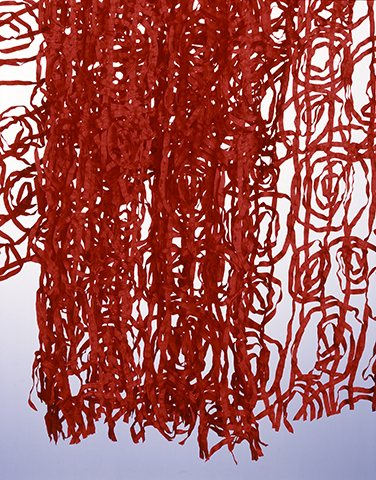
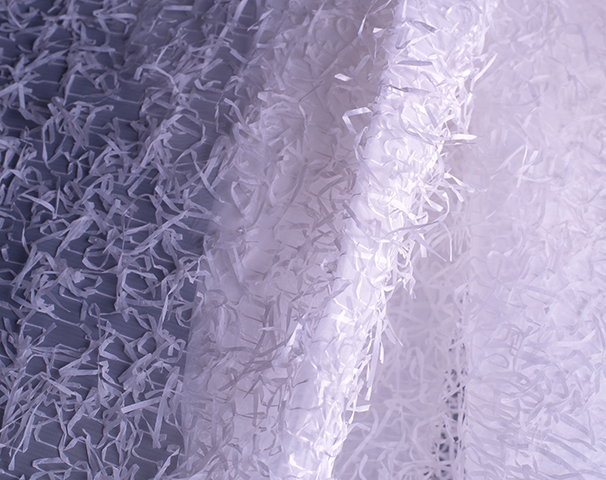
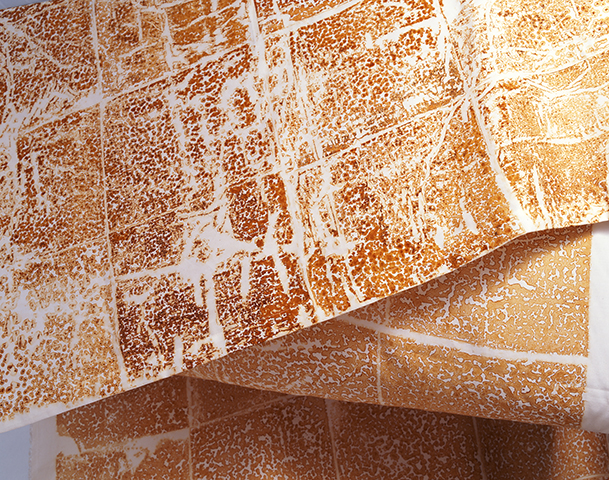
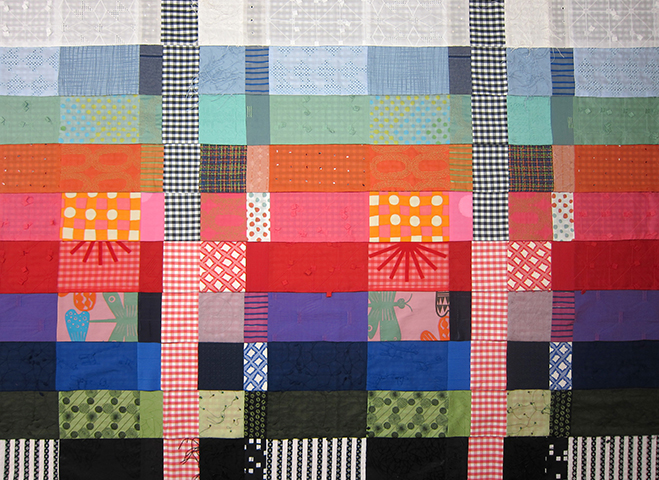
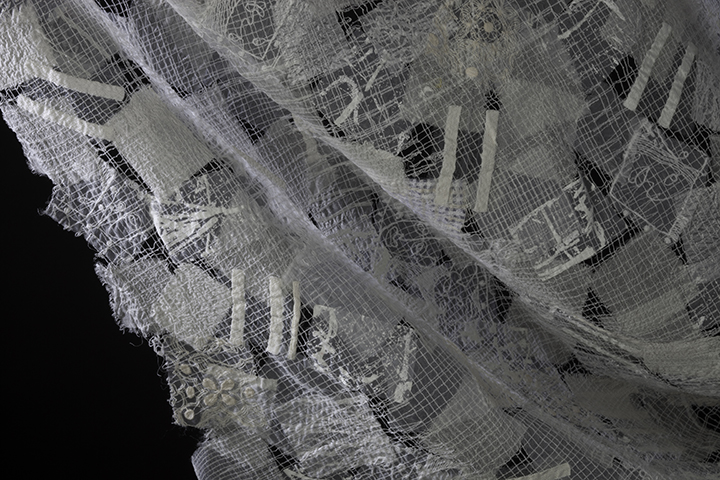






Reiko Sudo, renowned "weaver of new ideas," is co-founder, current CEO and design director of Nuno Corporation of Tokyo, universally recognized as one of the world’s most innovative textile companies. Nuno takes the techniques, materials and aesthetics of traditional textiles and reinterprets them with cutting-edge technologies.
Sudo and her design team, together with the company’s skilled weavers and dyers, have greatly broadened the parameters of contemporary design in the industry, experimenting with an eclectic array of materials, ranging from silk, cotton and polyester to hand-made paper and aluminum, and finishing methods that include salt-shrinking, rust-dyeing and caustic burning. The results are distinctive, intriguing and indisputably remarkable.
Since graduating in textile design and then helping to establish Nuno in 1984, Sudo has also taught at Musashino Art University and at Tokyo Zokei University, and was appointed professor there in 2007.
Her works are represented in the permanent collections of many institutions, including the Museum of Modern Art, New York; the Victoria & Albert Museum, London; and the Tokyo National Museum of Modern Art Craft Gallery. In print, Sudo has contributed six volumes of the beautifully designed Nuno Nuno Books series.
During her stay, Sudo visited the Desert Embroidery project founded by Beduin women in the South and the Nilit textile factory in northern Israel, as well as the Israel and the Tel Aviv Museums and the Design Museum, Holon. She was also greeted by two official receptions: one, an evening organized with the Israel-Japan Friendship Society at the home of Roni Nir and Arie Kutz, the society's chairman; the second was held at the residence of Ambassador of Japan. Satoshi Yasui, former art director of the large Japanese design company, Muji, was visiting Shenkar during Reiko Sudo's stay, and was glad to join her on some of the tours provided for her by the JCVA.
The two distinguished designers also traveled with the JCVA director to the Dead Sea, where Sudo was particularly thrilled with what she called a physical-spiritual experience.
Nuno Paper Roll
Polyester
Designer: Reiko Sudo and Tomoko Sasaki
1997-2002
Collection: Minneapolis Institute of Arts
The lacy, web-like fabric called Paper Roll was inspired by old shutters with worn, bent slats. The technique to materialize the fabric was developed after prolonged research and involves narrow ribbons of bias-cut nylon or polyester embroidered onto a water-soluble backing, which is later dissolved. The company description explains that the intricate patterns achieved involve the use of an old-fashioned embroidery machine that allows the operator to control most functions by foot and leaves the hands free to guide the needle with a steering wheel.
The recurring circular shapes of varying sizes make for a dynamic and singular fabric. Wide perforations, which can look like tears in the fabric, are equal in volume to the flimsy material that surrounds them. They allow for random folds that quickly turn three-dimensional on the body, as the fabric's effects shift depending on what it is worn over or with.
The technique combines cutting-edge technology with traditional craftsmanship. Narrow nylon strips produced by contemporary methods allow for a light, airy fabric, but the sewing requires old-time mechanical practices. Sudo is committed to traditional crafts workshops In Japan, and to maintaining their important role in the highly-revered Japanese textile tradition.
Nuno Patched Paper
Jacquard woven polyester / handmade paper (Mino Washi)
Width: 1110 mm
Designer: Reiko Sudo
1997
Collections: Baltimore Museum of Art, Minneapolis Institute of Arts
This unique fabric is composed of strips of Mino Washi paper that are woven into a polyester organdy. Mino Washi is a traditionally revered paper that is particularly fibrous and fine, and has been made in central Japan since the Eighth Century. It has long served for lighting fixtures, moving doors and screens.
Nuno Patched Paper uses Mino Washi that has been hand cut into narrow strips. The strips, which are not entirely identical, are woven into the polyester and fixed onto it using a traditional technique that relies on Japan's famous metal foil brocade specialists.
The combination of Mino Washi -- a landmark product of Japanese material culture, made of local plants with the use ancient techniques – and synthetic polyester which is commonly found in the apparel industry where it is used as a substitute for natural cloth, could easily have produced a clash. Instead, Reiko Sudo's creation is a feather-light, seemingly floating fabric with natural transparency, whose singular paper strips are playfully and randomly woven into infinitely variable and harmonious patterns. Like other Nuno textiles, Patched Paper is used in fashion items as well as in interior design, and lately as part of oversized art installations.